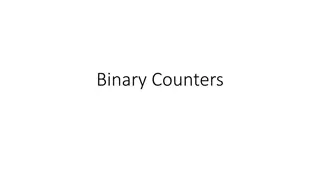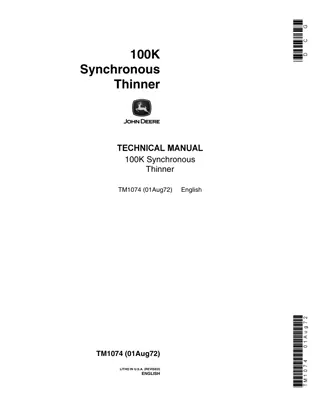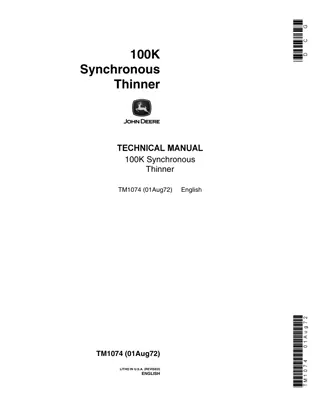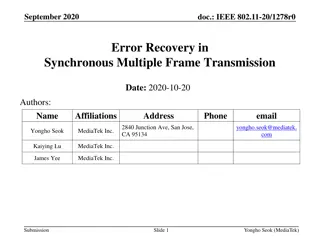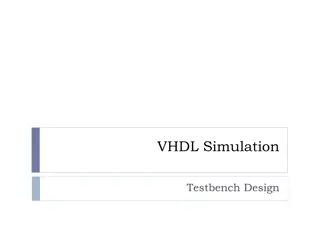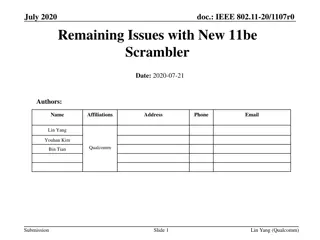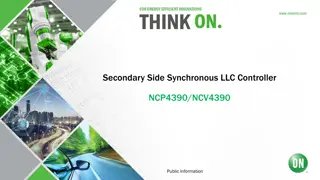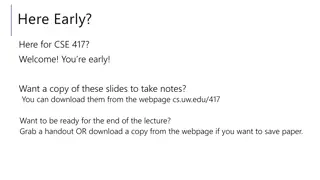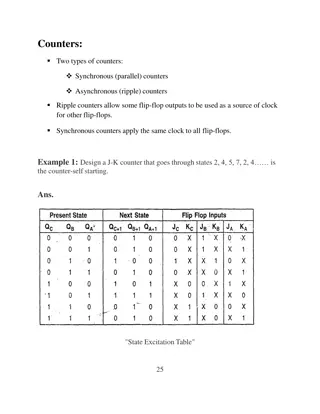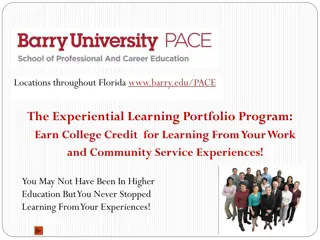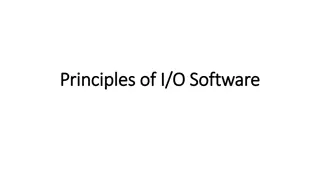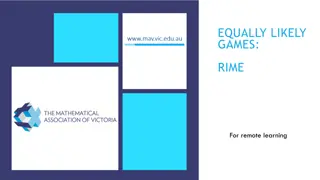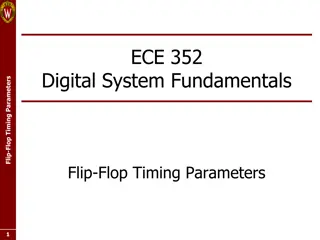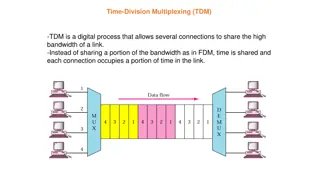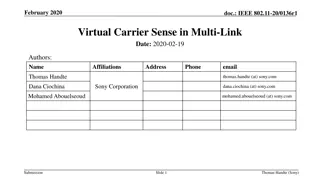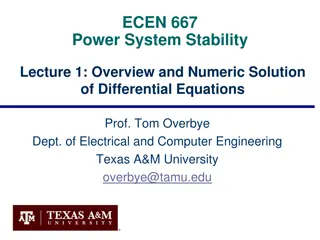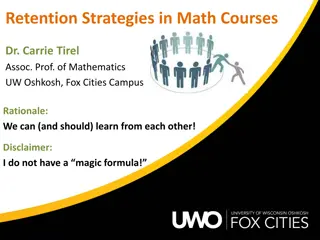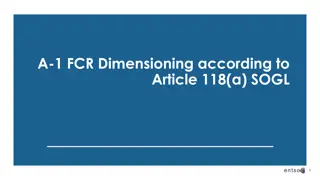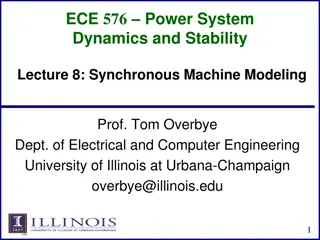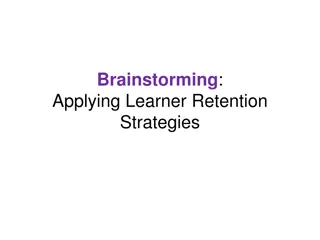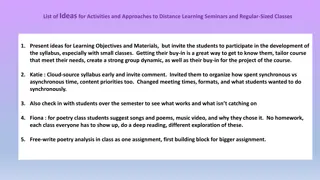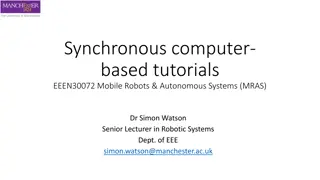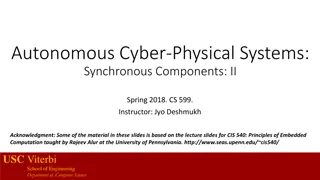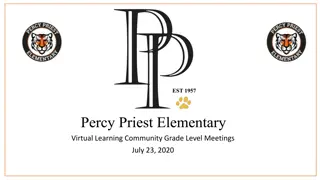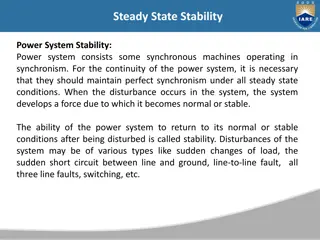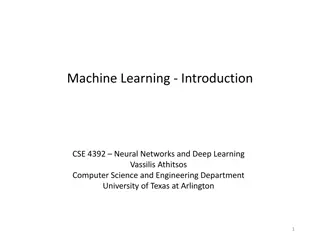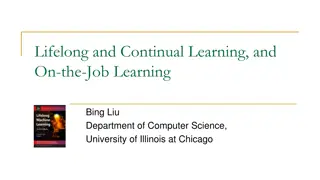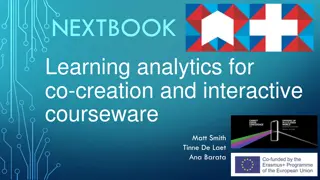Satellites and Orbits
The realm of satellites and orbits, covering topics such as Kepler's Laws, meteorological satellite orbits, the history of satellite remote sensing, and different types of orbits including geostationary and sun-synchronous orbits. Explore the significance of inclination angles, orbital speeds, and d
3 views • 22 slides
Understanding Moodle: An Overview of the E-Learning Platform
Moodle is an open-source Course Management System (CMS) that facilitates online learning. This platform provides various activities such as assignments, examinations, quizzes, chats, forums, and lessons. Users can access Moodle through login and manage course structures, contents, and user records.
2 views • 23 slides
Understanding the Evolution and Importance of SDH Technology
Explore the journey of Synchronous Digital Hierarchy (SDH) technology from its inception to modern advancements. Uncover key learnings, user preferences, potential challenges, and technological approaches to ensure SDH performance. Discover how SDH continues to play a vital role in telecom networks
2 views • 22 slides
Mastering Synchronizing of AC Power Generating Equipment in Renewable Energy Training Course
This module focuses on educating learners about the synchronization process of AC power producing equipment, including the differences between synchronous and induction generators, calculating generator frequencies, and understanding the operation of synchroscopes and the three light bulb method for
1 views • 38 slides
Overview of Distributed Systems: Characteristics, Classification, Computation, Communication, and Fault Models
Characterizing Distributed Systems: Multiple autonomous computers with CPUs, memory, storage, and I/O paths, interconnected geographically, shared state, global invariants. Classifying Distributed Systems: Based on synchrony, communication medium, fault models like crash and Byzantine failures. Comp
9 views • 126 slides
Understanding Binary Counters and Types of Counters
Binary counters are registers used to count clock pulses, while binary counters follow the binary number sequence. There are two types of counters: serial/asynchronous counters and parallel/synchronous counters. Serial counters change output flip-flop to next flip-flop, requiring minimal hardware bu
12 views • 21 slides
Understanding Sequential Logic in NUS CS2100 Lecture #19
Explore the concepts of sequential logic in Lecture #19 by Aaron Tan at NUS, covering memory elements, latches, flip-flops, asynchronous inputs, synchronous sequential circuits, and different types of sequential circuits. Delve into the distinction between combinatorial and sequential circuits, memo
3 views • 26 slides
John Deere 100K Synchronous Thinner Service Repair Manual Instant Download (tm1074)
Please open the website below to get the complete manual\n\n\/\/ \n
0 views • 17 slides
John Deere 100K Synchronous Thinner Service Repair Manual Instant Download (tm1074)
Please open the website below to get the complete manual\n\n\/\/
0 views • 17 slides
Enhancing Error Recovery in IEEE 802.11 with PIFS-Based Solution
This document discusses error recovery in synchronous multiple frame transmission according to IEEE 802.11 standards. It covers the process of identifying transmission failures, waiting for responses, and implementing PIFS-based recovery mechanisms. The proposed solution suggests synchronizing AckTi
0 views • 11 slides
Comprehensive VHDL Simulation Testbench Design Overview
In this detailed content, you will explore the concepts of VHDL simulation testbench design, project simulations in VHDL/Verilog, post-synthesis and post-layout processes, and example implementation of a modulo-7 counter VHDL model. The tutorial covers creating working libraries, mapping libraries,
1 views • 19 slides
Remaining Issues with New 11be Scrambler in IEEE 802.11-20
IEEE 802.11-20/1107r0 discusses the introduction of a new 11-bit scrambler in 11be to reduce payload PAPR. The document addresses issues related to the scrambler seed for CTS in response to MU-RTS transmissions, including the generation of PPDU synchronous scramblers, bit modulation in CTS and MU-RT
0 views • 7 slides
NCP4390/NCV4390 Secondary Side Synchronous LLC Controller
The NCP4390/NCV4390 is an advanced secondary side controller for LLC resonant converters with Synchronous Rectification (SR). It features current mode control based on charge control, dual-edge adaptive dead time control, and is an upgrade of FAN7688. The controller offers benefits like excellent tr
1 views • 6 slides
Early Arrival at CSE 417 Winter '21 Lecture - Grab Your Copy!
Welcome to CSE 417 Winter '21 Lecture 1! Get ready for an informative session with insightful staff details, classroom logistics, and important to-dos. Ensure you're prepared by downloading slides and handouts from the webpage. Stay updated with syllabus and additional textbook resources. Engage in
0 views • 33 slides
Understanding React Native's New Architecture
React Native has introduced a new architecture that eliminates the traditional Bridge and leverages JavaScript Interface (JSI) for better communication between JavaScript and C++. This new architecture improves performance, enables synchronous execution, and enhances concurrency in React Native apps
1 views • 18 slides
Understanding Synchronous and Asynchronous Counters in Digital Electronics
Explore the concepts of synchronous (parallel) and asynchronous (ripple) counters in digital electronics, where ripple counters enable clock sharing among flip-flops and synchronous counters apply the same clock to all. Learn to design J-K and up-down counters using flip-flops with examples and stat
1 views • 4 slides
Experiential Learning Portfolio Program at Barry University
Experiential Learning Portfolio Program at Barry University's School of Professional and Career Education (PACE) offers a unique opportunity to earn college credit for learning gained from work and community service experiences. Through this program, students can showcase their experiential learning
0 views • 16 slides
Principles and Goals of I/O Software Explained
This informative content discusses the principles and goals of I/O software, including device independence, uniform naming, error handling, synchronous vs asynchronous operations, and buffering. It emphasizes the importance of writing programs that can access any I/O device without specifying the de
5 views • 20 slides
Exploring Probability Through Equally Likely Games in Remote Learning
Engage students in investigating statistical outcomes of games to enhance their understanding of probability concepts. The task involves learning and playing two games, analyzing data to make predictions and calculate probabilities. Teachers can utilize remote learning strategies, such as asynchrono
6 views • 29 slides
Understanding Flip-Flop Timing Parameters in Digital Systems
In digital systems, flip-flop timing parameters are crucial for proper operation. Synchronous inputs must remain stable before and after the clock edge to ensure correct storage of values. Clock frequency, setup time, hold time, and propagation delay play key roles in signal integrity. By considerin
0 views • 9 slides
Understanding Time-Division Multiplexing (TDM) in Digital Communication
Time-Division Multiplexing (TDM) is a digital process that enables multiple connections to share the bandwidth of a link by dividing data into time slots. Synchronous TDM organizes data flows into frames with specific time slots for each input connection. Frames are crucial for grouping time slots i
0 views • 9 slides
Remote K-8 School: Providing Equitable & Individualized Learning Environment
Welcome to Remote K-8 School where our goal is to develop confident, responsible students who strive to reach their full potential. Principal Chris Wyland & Assistant Principal Princess Shepard lead our team. Good candidates excel at independent learning and managing their time. Our school day runs
0 views • 10 slides
Innovative Learning Management System - LAMS at Belgrade Metropolitan University
Belgrade Metropolitan University (BMU) utilizes the Learning Activity Management System (LAMS) to enhance the learning process by integrating learning objects with various activities. This system allows for complex learning processes, mixing learning objects with LAMS activities effectively. The pro
4 views • 16 slides
Virtual Carrier Sense in Asynchronous Multi-Link Networks
Exploring the implementation of virtual carrier sense in asynchronous multi-link networks based on IEEE 802.11 standards. The presentation discusses the benefits of using NAV (Network Allocation Vector) in asynchronous multi-link setups to avoid hidden node issues, improve throughput, and latency. I
0 views • 16 slides
ECEN 667 Power System Stability: Overview by Prof. Tom Overbye at Texas A&M University
In this comprehensive course on power system stability, Prof. Tom Overbye from Texas A&M University covers topics ranging from electromagnetic transients to energy function methods. The course provides insights into modeling synchronous machines, transient stability, signal analysis, and more. Prof.
0 views • 35 slides
Effective Retention Strategies in Mathematics Courses
Dr. Carrie Tirel, Associate Professor of Mathematics at UW Oshkosh, Fox Cities Campus, shares valuable insights on retention strategies in math courses. The strategies include organized weekly modules on Canvas, engaging synchronous class sessions, virtual office hours, and building a supportive com
0 views • 6 slides
FCR Dimensioning Rules Proposal for Synchronous Area Operational Agreements
Article 118 of the Synchronous Operational Agreements introduces rules for the dimensioning of Frequency Containment Reserve (FCR). The proposal requires TSOs to jointly develop guidelines for FCR dimensioning, including annual reserve capacity determination and initial obligations. Specific criteri
0 views • 16 slides
Power System Dynamics and Stability Lecture 8: Synchronous Machine Modeling
This lecture focuses on modeling synchronous machines for power system dynamics and stability analysis. Topics include load modeling, dynamic load models, and comparing results with different load characteristics. The content also covers commercial transient stability packages and adding detailed lo
0 views • 37 slides
Enhancing Learner Retention: Strategies and Application
Designing effective learning solutions requires implementing various learner retention strategies such as pre-course reading, quizzes, and post-course reflection. Different modes of delivery, including online, synchronous, classroom, and blended approaches, impact the effectiveness of these strategi
1 views • 8 slides
Creative Approaches to Engaging Students in Distance Learning Seminars
Encourage student participation in syllabus development, utilize diverse activities like poetry analysis and genre exploration, implement synchronous/asynchronous balance, and leverage tools like MEMES, audio blogs, and PollEverywhere for interactive and dynamic learning experiences.
0 views • 8 slides
Enhancing Classroom Integrity Through Online Assessments
Developing classroom-based online assessments can minimize cheating potential and ensure test reliability. Implementing strategies like using multiple choice questions with strategic options and time limits can help teachers conduct fair tests online. This approach facilitates synchronous online tes
0 views • 13 slides
Sync HotStuff: Practical Synchronous State Machine Replication
Sync HotStuff is a practical synchronous protocol that tolerates Byzantine replicas and handles weaker synchrony models. It overcomes issues of requiring a large number of rounds and lock-step execution. The protocol ensures safety by committing blocks and guarantees liveness by continuing to commit
0 views • 15 slides
Overview of Unified Power Flow Controller (UPFC) in Power Systems
A Unified Power Flow Controller (UPFC) is a combination of a Static Synchronous Compensator (STATCOM) and a Static Synchronous Series Compensator (SSSC) interconnected via a common DC link. UPFC allows bidirectional flow of real power and provides concurrent real and reactive series line compensatio
0 views • 20 slides
Overview of EEEN30072 Mobile Robots & Autonomous Systems Course by Dr. Simon Watson
Providing a comprehensive introduction to mobile robots and autonomous systems, the EEEN30072 course led by Dr. Simon Watson is aimed at 3rd-year students, offering a mix of asynchronous materials and synchronous sessions. The course structure includes interactive synchronous exercises, group discus
0 views • 8 slides
Understanding Synchronous Reactive Components in Autonomous Cyber-Physical Systems
Synchronous Reactive Components (SRCs) play a crucial role in Autonomous Cyber-Physical Systems, involving inputs, state variables, outputs, and updates. Valuation functions, input valuations, and state valuations are key concepts in formalizing SRCs. Explore the definition, variables, valuations, a
0 views • 37 slides
Virtual Learning Community Grade Level Meetings Summary
Virtual Learning Community Grade Level Meetings for July 23, 2020 focus on the necessary technology requirements, synchronous and asynchronous learning opportunities, attendance guidelines, grading, and feedback details. Students are required to have devices with internet access and must engage in b
0 views • 20 slides
Understanding Power System Stability: Synchronous Machines and Dynamics
Power system stability is crucial for maintaining synchronism and continuity. It includes steady-state and transient stability, with dynamics of synchronous machines playing a key role. Different types of disturbances can affect stability, requiring a system's ability to adjust and return to normal
0 views • 73 slides
Understanding Machine Learning: Types and Examples
Machine learning, as defined by Tom M. Mitchell, involves computers learning and improving from experience with respect to specific tasks and performance measures. There are various types of machine learning, including supervised learning, unsupervised learning, and reinforcement learning. Supervise
0 views • 40 slides
Lifelong and Continual Learning in Machine Learning
Classic machine learning has limitations such as isolated single-task learning and closed-world assumptions. Lifelong machine learning aims to overcome these limitations by enabling models to continuously learn and adapt to new data. This is crucial for dynamic environments like chatbots and self-dr
0 views • 32 slides
Enhancing Learning Through Co-Created Interactive Courseware and Learning Analytics
Explore the innovative concept of co-creation in interactive courseware and learning analytics to improve student learning outcomes. Discover how students collaborate in a social learning environment, track their progress, and engage in dialogic and constructive pedagogical strategies. Harness the p
0 views • 19 slides





